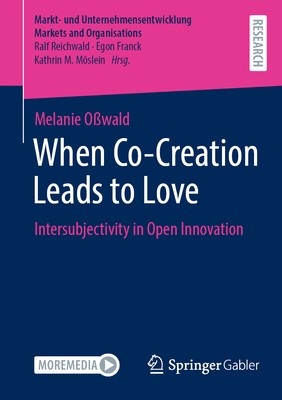
- We will send in 10–14 business days.
- Author: Melanie OÃÂwald
- Publisher: Springer Gabler
- ISBN-10: 3658488891
- ISBN-13: 9783658488895
- Format: 14.8 x 21 x 1.2 cm, mīksti vāki
- Language: English
- SAVE -10% with code: EXTRA
Reviews
Description
Innovating organizations struggle to select suitable co-creators and their ideas. Co-creating market relevance is challenging, as one's own contributions often lead to evaluation biases, such as the "IKEA Effect - When Labor Leads to Love," the foundation of this book. Transcending organizational boundaries requires transcending individual evaluation. Intersubjectivity is essential for this step. This work suggests using intersubjectivity as a concept for more efficient open innovation beyond individual biases. The exploratory sequential research design aims to develop a comprehensive understanding of evaluation biases and the concept of intersubjectivity in open innovation. It begins with qualitative inquiry, including a narrative literature review and expert interviews, followed by the identification and empirical testing of novel intersubjectivity-related variables through laboratory and field experiments. In addition to its theoretical implications, this book presents a typology of contexts requiring intersubjectivity and provides a working model to guide organizations and intermediaries in their co-creation practices.
EXTRA 10 % discount with code: EXTRA
The promotion ends in 23d.10:35:57
The discount code is valid when purchasing from 10 €. Discounts do not stack.
- Author: Melanie OÃÂwald
- Publisher: Springer Gabler
- ISBN-10: 3658488891
- ISBN-13: 9783658488895
- Format: 14.8 x 21 x 1.2 cm, mīksti vāki
- Language: English English
Innovating organizations struggle to select suitable co-creators and their ideas. Co-creating market relevance is challenging, as one's own contributions often lead to evaluation biases, such as the "IKEA Effect - When Labor Leads to Love," the foundation of this book. Transcending organizational boundaries requires transcending individual evaluation. Intersubjectivity is essential for this step. This work suggests using intersubjectivity as a concept for more efficient open innovation beyond individual biases. The exploratory sequential research design aims to develop a comprehensive understanding of evaluation biases and the concept of intersubjectivity in open innovation. It begins with qualitative inquiry, including a narrative literature review and expert interviews, followed by the identification and empirical testing of novel intersubjectivity-related variables through laboratory and field experiments. In addition to its theoretical implications, this book presents a typology of contexts requiring intersubjectivity and provides a working model to guide organizations and intermediaries in their co-creation practices.


Reviews